-
 bitcoin
bitcoin $114320.977035 USD
-0.40% -
 ethereum
ethereum $4152.439985 USD
-1.75% -
 tether
tether $1.000111 USD
-0.04% -
 xrp
xrp $2.843037 USD
-1.63% -
 bnb
bnb $1013.349380 USD
-1.62% -
 solana
solana $208.362767 USD
-2.10% -
 usd-coin
usd-coin $0.999783 USD
0.00% -
 dogecoin
dogecoin $0.232559 USD
-1.00% -
 tron
tron $0.333491 USD
-1.09% -
 cardano
cardano $0.806310 USD
0.19% -
 hyperliquid
hyperliquid $45.023720 USD
-1.59% -
 ethena-usde
ethena-usde $1.000819 USD
-0.06% -
 chainlink
chainlink $21.241249 USD
-2.11% -
 avalanche
avalanche $30.035416 USD
-0.66% -
 stellar
stellar $0.364984 USD
-2.05%
How can I set up multi-device management on my Ledger for home use?
Ledger allows multi-device access using the same recovery phrase, enabling secure, redundant wallet management across household devices.
Sep 29, 2025 at 11:01 pm
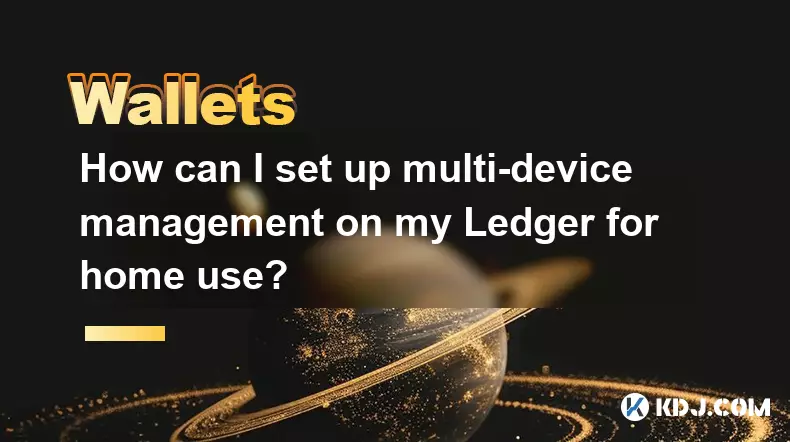
Understanding Multi-Device Management with Ledger
1. Setting up multi-device management on a Ledger allows users to access their cryptocurrency wallets across multiple hardware devices using the same recovery phrase. This is particularly useful for home users who want redundancy or shared access among trusted family members. Each Ledger device operates independently, but they can be initialized with the same 24-word recovery phrase, enabling identical wallet access.
2. It’s important to understand that Ledger does not sync devices automatically. Instead, each physical device must be manually set up using the recovery phrase. This means if you own two Ledger Nano X or Ledger Stax units, you can restore the same accounts on both by entering the recovery phrase during setup. This provides flexibility and backup in case one device is lost or damaged.
3. The process begins by securing your original recovery phrase. Never store it digitally. Use the included metal recovery sheet or another offline method. When setting up an additional Ledger device, choose 'Restore from recovery phrase' instead of creating a new one. Input the 24 words carefully, ensuring correct order and spelling.
4. After restoring the phrase, the second device will display the same public addresses for Bitcoin, Ethereum, and other supported coins. Transactions signed on either device are equally valid because they derive from the same private keys. This enables true multi-device control without compromising security.
Never enter your recovery phrase on any device not manufactured by Ledger. Phishing attempts often mimic setup screens to steal credentials.Securing Access Across Household Devices
1. For home use, consider assigning specific devices to individual family members while maintaining the same underlying wallet structure. Each person gets their own Ledger unit restored from the master recovery phrase, reducing the risk of physical loss affecting access to funds.
2. Use strong PIN codes unique to each device. Even though the wallets are identical, separate PINs add a layer of protection. If one device is compromised or misplaced, the PIN acts as a deterrent against unauthorized access.
3. Physically secure each device when not in use. Store them in separate locations within the home to mitigate risks from theft, fire, or water damage. Pairing this with offline backups of the recovery phrase enhances resilience.
4. Regularly verify that all devices show the same account balances and transaction history. Open Ledger Live on each connected computer and confirm synchronization with the blockchain. Discrepancies may indicate tampering or incorrect setup.
Always verify the integrity of your Ledger device by checking packaging seals and authenticating via Ledger Live before initial use.Managing Software and Firmware Consistency
1. Ensure all Ledger devices run the latest firmware version. Outdated firmware may have vulnerabilities or compatibility issues with Ledger Live or certain apps. Connect each device to Ledger Live and follow prompts to update if necessary.
2. Install the same cryptocurrency apps on each device. For example, if you use Ethereum, Solana, and Dogecoin on one Ledger, install those same apps on the others. App installation must be done individually per device through Ledger Manager in Ledger Live.
3. Keep Ledger Live updated across all computers used at home. Different versions may misinterpret data or fail to communicate properly with hardware wallets. Consistent software ensures reliable interaction regardless of which device or PC is in use.
4. Disable Bluetooth and unused connectivity features when not needed. While Ledger Nano X supports Bluetooth, leaving it enabled increases attack surface. Turn it off after pairing and only re-enable when adding a new device.
Avoid installing third-party apps or unofficial firmware modifications. These can introduce malware that compromises private key security.Frequently Asked Questions
Can I use the same Ledger Live account with multiple Ledger devices?Yes, Ledger Live does not bind to a single hardware device. You can connect different Ledger units to the same Ledger Live installation. The interface will reflect the accounts based on whichever device is currently plugged in or paired.
What happens if one of my Ledger devices gets stolen?If someone steals a Ledger device, they cannot access funds without the PIN. Immediately stop using that device and consider transferring assets to a new wallet created with a different recovery phrase. Do not attempt to restore the stolen device until you’ve secured your funds.
Is it safe to share my recovery phrase with family members?Sharing the recovery phrase introduces risk. If shared, ensure recipients understand security best practices. A safer alternative is providing each person a separate Ledger restored from the phrase, while keeping the original backup in a secure, centralized location accessible only under agreed conditions.
Can I manage NFTs across multiple Ledgers?Yes, since NFT ownership is tied to blockchain addresses and not hardware, any Ledger restored with the correct recovery phrase will control the same NFTs. View them through compatible wallets like Ledger Live or connected dApps using Wallet Connect.
Disclaimer:info@kdj.com
The information provided is not trading advice. kdj.com does not assume any responsibility for any investments made based on the information provided in this article. Cryptocurrencies are highly volatile and it is highly recommended that you invest with caution after thorough research!
If you believe that the content used on this website infringes your copyright, please contact us immediately (info@kdj.com) and we will delete it promptly.
- BlockDAG, DOGE, HYPE Sponsorship: Crypto Trends Shaping 2025
- 2025-10-01 00:25:13
- Deutsche Börse and Circle: A StableCoin Adoption Powerhouse in Europe
- 2025-10-01 00:25:13
- BlockDAG's Presale Buzz: Is It the Crypto to Watch in October 2025?
- 2025-10-01 00:30:13
- Bitcoin, Crypto, and IQ: When Genius Meets Digital Gold?
- 2025-10-01 00:30:13
- Stablecoins, American Innovation, and Wallet Tokens: The Next Frontier
- 2025-10-01 00:35:12
- NBU, Coins, and Crypto in Ukraine: A New Yorker's Take
- 2025-10-01 00:45:14
Related knowledge

How to get the Trust Wallet browser extension?
Oct 01,2025 at 12:37am
How to Access the Trust Wallet Browser Extension1. Visit the official Trust Wallet website through a secure internet connection. Navigate to the downl...
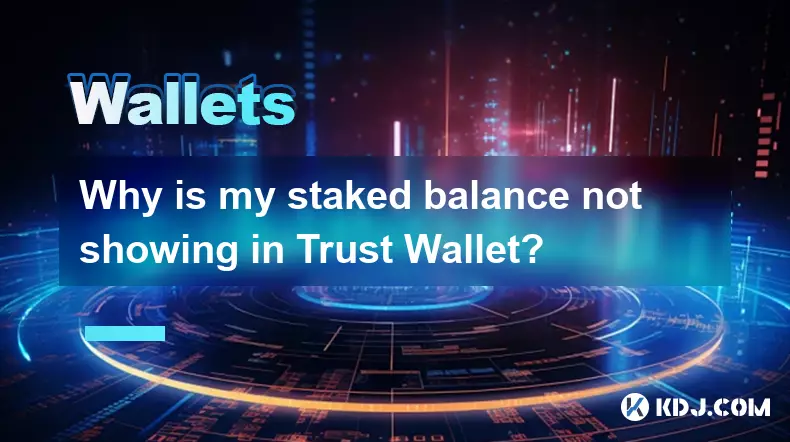
Why is my staked balance not showing in Trust Wallet?
Oct 01,2025 at 12:54am
Understanding Decentralized Exchanges in the Crypto Ecosystem1. Decentralized exchanges (DEXs) operate without a central authority, allowing users to ...
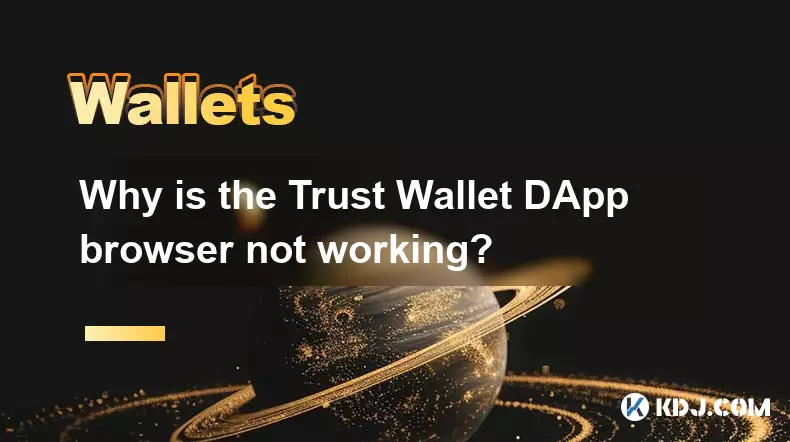
Why is the Trust Wallet DApp browser not working?
Oct 01,2025 at 05:36am
Common Causes of Trust Wallet DApp Browser Issues1. The DApp browser within Trust Wallet may fail to load due to connectivity problems. A weak or unst...
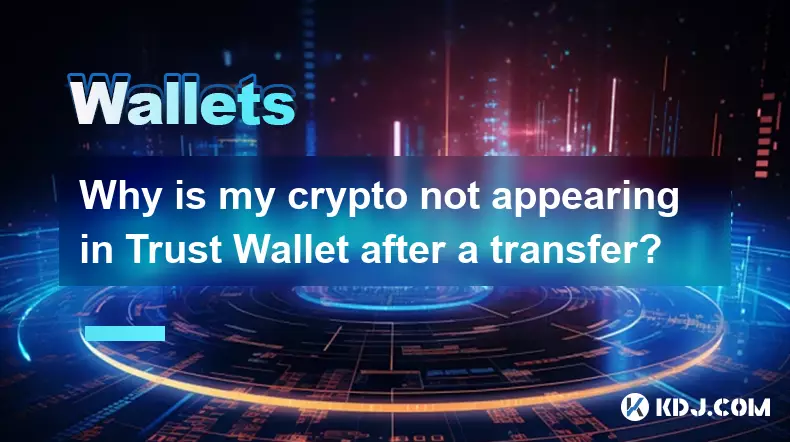
Why is my crypto not appearing in Trust Wallet after a transfer?
Oct 01,2025 at 04:36am
Common Reasons Your Crypto Doesn’t Appear in Trust Wallet1. The transaction is still pending on the blockchain. Blockchain confirmations can take time...
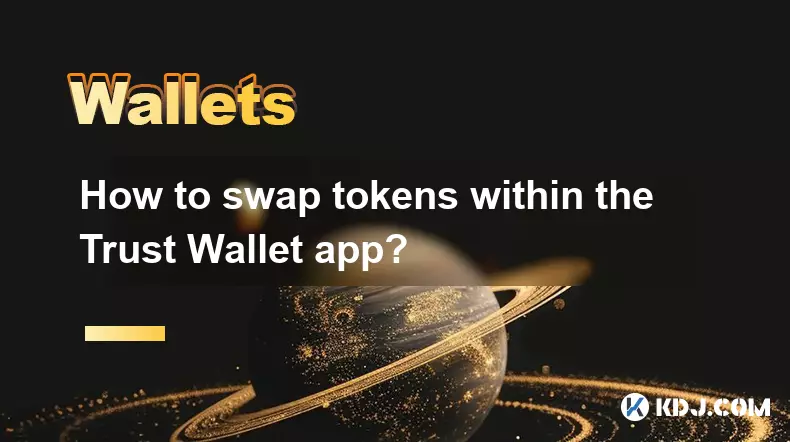
How to swap tokens within the Trust Wallet app?
Oct 01,2025 at 01:54am
Accessing the Swap Feature in Trust Wallet1. Open the Trust Wallet application on your mobile device and ensure you are logged into your account secur...
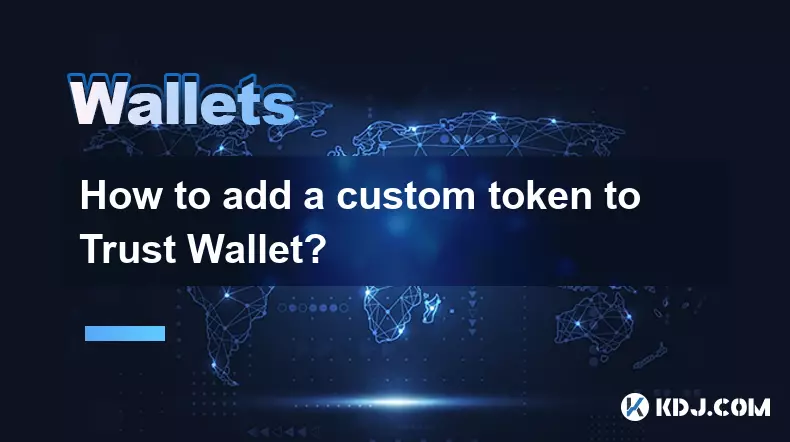
How to add a custom token to Trust Wallet?
Sep 30,2025 at 08:36pm
Adding a Custom Token to Trust Wallet: Step-by-Step Guide1. Open the Trust Wallet application on your mobile device and ensure you are logged into you...

How to get the Trust Wallet browser extension?
Oct 01,2025 at 12:37am
How to Access the Trust Wallet Browser Extension1. Visit the official Trust Wallet website through a secure internet connection. Navigate to the downl...

Why is my staked balance not showing in Trust Wallet?
Oct 01,2025 at 12:54am
Understanding Decentralized Exchanges in the Crypto Ecosystem1. Decentralized exchanges (DEXs) operate without a central authority, allowing users to ...

Why is the Trust Wallet DApp browser not working?
Oct 01,2025 at 05:36am
Common Causes of Trust Wallet DApp Browser Issues1. The DApp browser within Trust Wallet may fail to load due to connectivity problems. A weak or unst...

Why is my crypto not appearing in Trust Wallet after a transfer?
Oct 01,2025 at 04:36am
Common Reasons Your Crypto Doesn’t Appear in Trust Wallet1. The transaction is still pending on the blockchain. Blockchain confirmations can take time...

How to swap tokens within the Trust Wallet app?
Oct 01,2025 at 01:54am
Accessing the Swap Feature in Trust Wallet1. Open the Trust Wallet application on your mobile device and ensure you are logged into your account secur...

How to add a custom token to Trust Wallet?
Sep 30,2025 at 08:36pm
Adding a Custom Token to Trust Wallet: Step-by-Step Guide1. Open the Trust Wallet application on your mobile device and ensure you are logged into you...
See all articles










































































